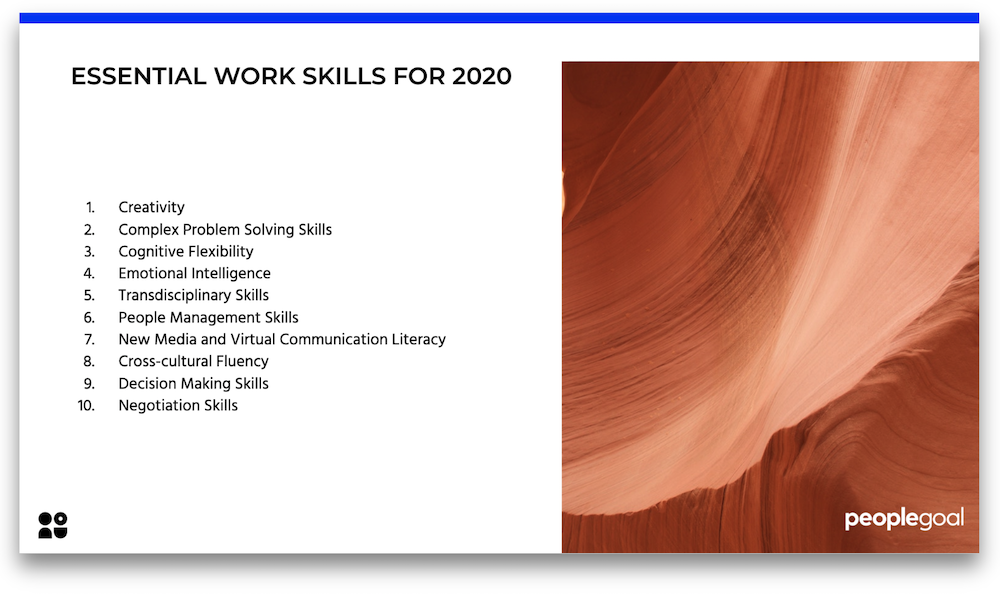Effective managers set goals for the workers they supervise. Goals have a number of beneficial effects:
- They serve to unify and motivate individuals, teams and organisations
- They give teams objectives and targets throughout the year with a metric to measure their success against
- Goals maintain employees’ alignment to the business strategy whilst allowing for autonomy
Goal setting is an integral part of any successful organisation. Our guidelines will help you get the most out of your goal process.
Align individual goals with the department and company objectives
Organisations should have a standard, enterprise-wide approach to goal setting. This ensures that the goals of each employee align with the whole company. The manager or team leader must communicate the organisation’s goals to their team members, and re-iterate them during the goal process (goal-setting, goal-achieving, goal completion). You should try and encourage employees to link their individual goals to the organisation’s mandate – this allows each employee to recognise their individual contribution to success and continually align them to the organisation as a whole. Continuous communication of the values, goals and visions of the company from the top-down is imperative. Effective communication is central to any thriving team.
Developing Your Goals
Setting team goals is one of the most effective methods of achieving a desired outcome efficiently. Making sure that you set the right goals for your team is arguably one of the most important stages in the goal-setting process. There are a number of methods you may wish to follow when goal setting. Employee goal-setting can be based on the SMART methodology; or the objectives and key results system made popular at companies like Google and Intel. Alternatively, you can completely customise the goal setting attributes to suit your company. Our goals module has incredibly detailed and wide-ranging reporting capabilities for your needs.
Create an Action Plan
To achieve a goal, a clear action plan is needed. The purpose of an action plan is to clarify what resources are needed to achieve each goal and formulate a timeline for specific tasks to completed. By the end of the action plan, the superordinate goal should have been completed. ‘Resources’ corresponds to any tool an employee needs to reach their goal, this may include training, mentoring or new software. Once you have devised goals and created action plans, explain them to your team.
Dividing the Team Goals
Divide the action plan among your team. Good managers find out the capabilities of each employee, they know what each employee can or can’t do, and which areas each employee enjoys working in. They then distribute tasks according to their talents. This is not always possible due to certain constraints. If not, ask the members of the team who they feel is appropriate for what. Divide the work evenly. This does not mean that everyone should have the same number of tasks, as intuitively some tasks are more heavily weighted.
Accountability
Accountability is an important tool when setting clear goals. Employees should understand that there is a level of individual responsibility for when a team succeeds and for when it fails. Those who are performing well and/or out-performing expectations need to be recognised for their achievements, whilst those who are performing below-par need to bear the responsibility.
Measure
Make sure to measure the progress of each individual, and subsequent team goal. Watch for overall production and individual performance. This way you can provide continuous feedback, recognition and where needed, reproach. PeopleGoal’s performance management software aligns employee goals to the growth strategy of the business using a balanced scorecard approach. Our goals module has incredibly detailed and wide-ranging reporting capabilities, including topics like goal alignment; goal contribution and goal progress.
Regardless of the level of achievement, it’s important that the process ends in some form of appraisal. If goals are met or surpassed, recognition or reward can lead to further employee engagement. Read our previous blogs on employee engagement and recognition for further information. The appraisal is also good opportunity to reiterate the organisations mandate to the employee, so that they can align their goals with the organisations.
Goal setting is an integral part of any organisation. By following these flexible steps, you can exercise an organised and efficient goal-setting progress at your organisation, and in turn reap the benefits.
Feel free to read our other blogs, reviews or FAQ’s to find out more. You can even try our platform in a free 14-day trial with no subscription needed.
Alternatively, you can also email us directly at contact@peoplegoal.com.
Ready to 3x Your Teams' Performance?
Use the best performance management software to align goals, track progress, and boost employee engagement.




